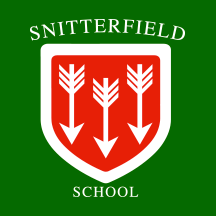Snitterfield Primary School understands that the effective use of assessment and marking and feedback techniques can have a powerful influence on pupils’ learning and progression. Marking is a key aspect of a teacher’s responsibility and is a prominent technique for communicating with pupils – marking is part of the school’s comprehensive review of teaching, learning, assessment and achievement. Feedback is a process that the school should ensure is consistently applied by all teaching staff, aiding with better supporting pupils’ learning.
We aim to ensure that marking and feedback:
- Informs pupils about what they have done well and highlights areas of improvement.
- Supports pupils’ confidence in learning, contributing to accelerated learning.
- Supports teachers’ assessment knowledge for each pupil, to plan and establish effective next steps in their academic progression.
- Develops reliable processes in the school, which equally balance the need to provide marking and feedback and where it is appropriate to provide it
Feedback should be given to:
- Motivate pupils.
- Address misunderstandings.
- Establish an opportunity to make learning progress, by:
- Rectifying a misunderstanding.
- Reinforcing a skill or piece of information.
- Improving on a pupil’s understanding or ability to do something.
Feedback differs from marking in that it is not limited to comments placed on the work of pupils; for example, feedback can be immediate verbal communication in the classroom or provided during one-to-one meetings.
The school believes in developing independent thinkers and, as such, feedback will guide the pupil to the correct answers as opposed to giving the answers away.
Verbal feedback can act as a way to give immediate and effective feedback to pupils.
Teachers will mark on pupils’ work when verbal feedback was given.
Assessment
These are more formal measures which record the children’s learning at a certain point in time, and show how much value has been added to the children’s learning since the last formal assessment. We also use them to track the children’s progress through the school and target children who are not achieving their potential.
Summative assessments come in various forms:
- Teacher assessments of attainment at the end of a teaching unit, a half term or term against the national expectation
- Termly assessments using NFER standardised test materials in Reading and Maths for KS1 and KS2
- Formal assessment across a range of writing (termly) using consortia agreed assessment grids
- All pupils in Years 1-6 have end of unit assessments of the skills they have achieved in the Foundation subjects.
- For pupils in the Foundation Stage, summative assessment is in the form of a completed Foundation Stage Profile for each pupil.
Statutory assessments are made at several points during the primary school years. These are formal assessments and tests, the results of which are reported at local and national level. Throughout the school journey there are various Statutory Assessments which the children undertake:
- Early Years Foundation Assessment
- Year 1 Phonics Screening test (any children in Year 2 who did not pass in Year 1 are retested)
- Optional end of KS1 Standard Assessment Tests (SATs)
- Y4 Multiplication Screening Check
- End of KS2 SATS in Reading; Grammar, Spelling & Punctuation; and Maths
